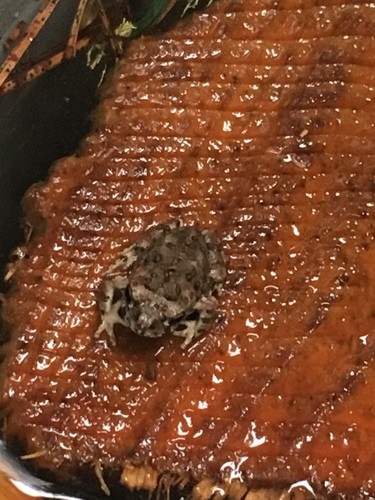Western toad
A species of North american green toad, Also known as California toad Scientific name : Anaxyrus boreas Genus : North american green toad
Western toad, A species of North american green toad
Also known as:
California toad
Scientific name: Anaxyrus boreas
Genus: North american green toad
Content
Description People often ask General Info
 Photo By rebeccafay , used under CC-BY-NC-4.0 /Cropped and compressed from original
Photo By rebeccafay , used under CC-BY-NC-4.0 /Cropped and compressed from original Description
The western toad (Anaxyrus boreas, formerly Bufo boreas) is a large toad species, between 5.6 and 13Â cm (2.2 and 5.1Â in) long, native to western North America. A. boreas is frequently encountered during the wet season on roads, or near water at other times. When handled adults often vocalize, making a sound like a peeping chick while struggling. It eats any type of insect it can catch. It can jump a considerable distance for a toad. Breeding...
People often ask
General Info
Lifespan
10-12 years
Diet
Western toad is predominantly insectivorous, feasting chiefly on ants, beetles, and other small invertebrates. It has displayed specific preferences for myrmecophagous occasions, actively pursuing ants as a favored nutrient source.
Appearance
Western toad is a medium-sized toad with rough, warty skin. Its primary coloration ranges from greenish-gray to dark brown, often with darker blotches or spots. This amphibian is known for its prominent cranial crests and large, oval parotoid glands located behind the eyes. There's a noticeable sexual dimorphism in this toad, with females generally larger, and males having nuptial pads on their thumbs during breeding season.
Behavior
Western toad is largely nocturnal and solitary, known for its distinct call. This species exhibits a fascinating behavior of producing a distress call when threatened and secreting toxins as a deterrent for predators. Adapted for survival in varying environments, it hibernates during excessively cold conditions and aestivates in extremely dry periods.
Population
Decreasing